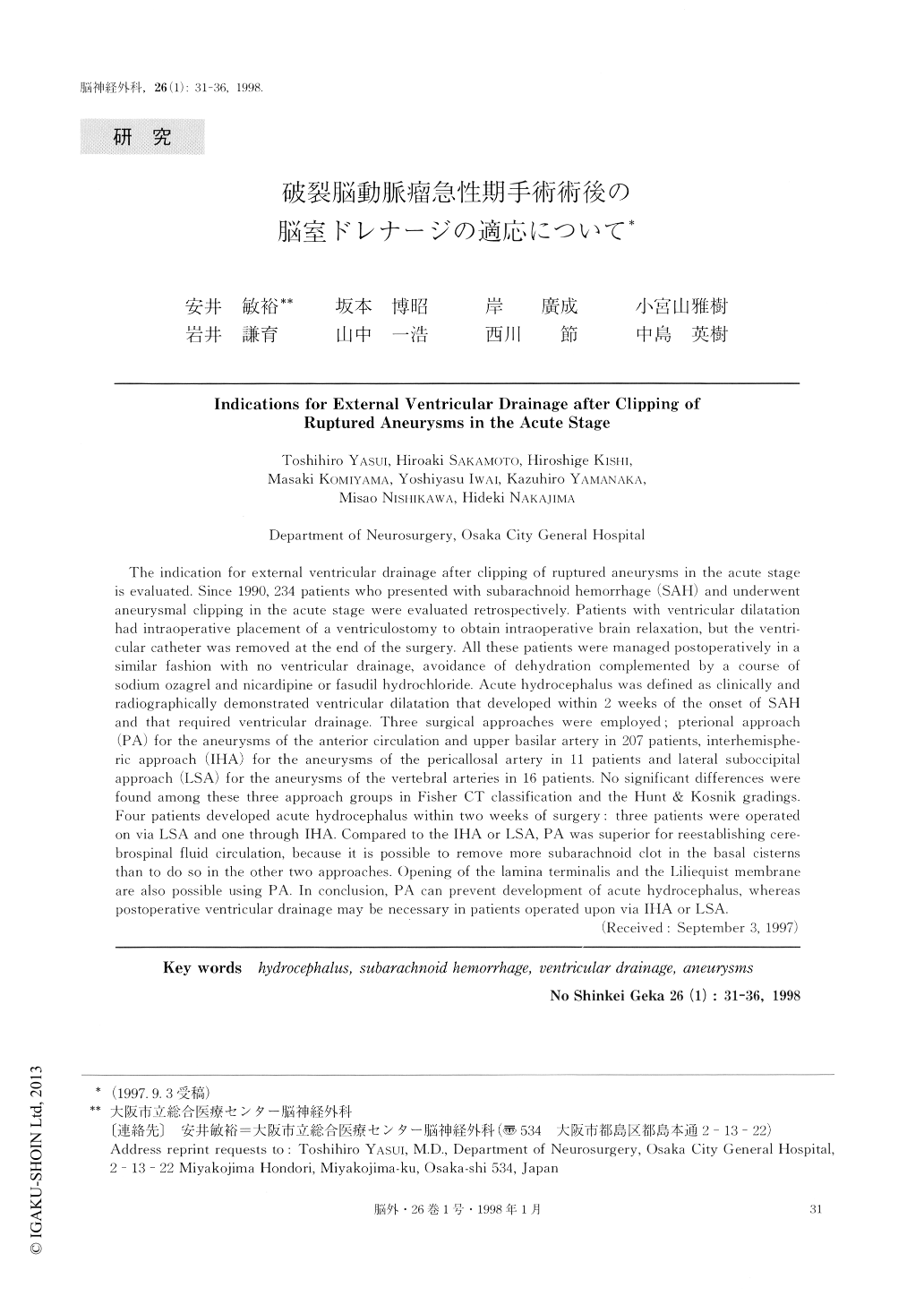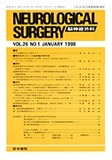Japanese
English
- 有料閲覧
- Abstract 文献概要
- 1ページ目 Look Inside
I.はじめに
破裂脳動脈瘤急性期手術に際し硬膜内操作を容易にするためや,術後の頭蓋内圧管理のために脳室ドレナージを挿入することがある.しかし,脳室ドレナージの挿入には,早期離床の阻害,正常圧水頭症発生率の上昇10,12),脳血管攣縮発生率の増加5),感染の危険,脳実質損傷7)などの短所もあることから,破裂脳動脈瘤急性期手術の術後には脳室ドレナージを行わないとの主張もある3).著者らもこの主張にもとづき1988年頃から破裂脳動脈瘤急性期手術の術後にはなるべく脳室ドレナージを用いないようにしてきた.その結果,特に問題となった症例がなかったことから1990年からは術前に脳室拡大が見られた症例においても術後は脳室ドレナージなしで管理をする方針としてきた.しかし,中には術後急性期(2週間以内)に水頭症による意識障害のために脳室ドレナージの挿入をせざるを得なくなった症例も経験した.今回これらの症例を報告し,破裂脳動脈瘤急性期手術術後における脳室ドレナージ挿入の適応について考察する.
The indication for external ventricular drainage after clipping of ruptured aneurysms in the acute stageis evaluated. Since 1990, 234 patients who presented with subarachnoid hemorrhage (SAH) and underwentaneurysmal clipping in the acute stage were evaluated retrospectively. Patients with ventricular dilatationhad intraoperative placement of a ventriculostomy to obtain intraoperative brain relaxation, but the ventri-cular catheter was removed at the end of the surgery. All these patients were managed postoperatively in asimilar fashion with no ventricular drainage, avoidance of dehydration complemented by a course ofsodium ozagrel and nicarclipine or fasudil hydrochloride. Acute hydrocephalus was defined as clinically andradiographically demonstrated ventricular dilatation that developed within 2 weeks of the onset of SAHand that required ventricular drainage. Three surgical approaches were employed; pterional approach(PA) for the aneurysms of the anterior circulation and upper basilar artery in 207 patients, interhemisphe-ric approach (MA) for the aneurysms of the pericallosal artery in 11 patients and lateral suboccipitalapproach (LSA) for the aneurysms of the vertebral arteries in 16 patients. No significant differences werefound among these three approach groups in Fisher CT classification and the I lunt 8i Kosnik gradings.Four patients developed acute hydrocephalus within two weeks of surgery : three patients were operatedon via LSA and one through IHA. Compared to the IHA or LSA, PA was superior for reestablishing cere-brospinal fluid circulation, because it is possible to remove more subarachnoid clot in the basal cisternsthan to do so in the other two approaches. Opening of the lamina terminalis and the Liliequist membraneare also possible using PA. In conclusion, PA can prevent development of acute hydrocephalus, whereaspostoperative ventricular drainage may be necessary in patients operated upon via IHA or LSA.

Copyright © 1998, Igaku-Shoin Ltd. All rights reserved.


